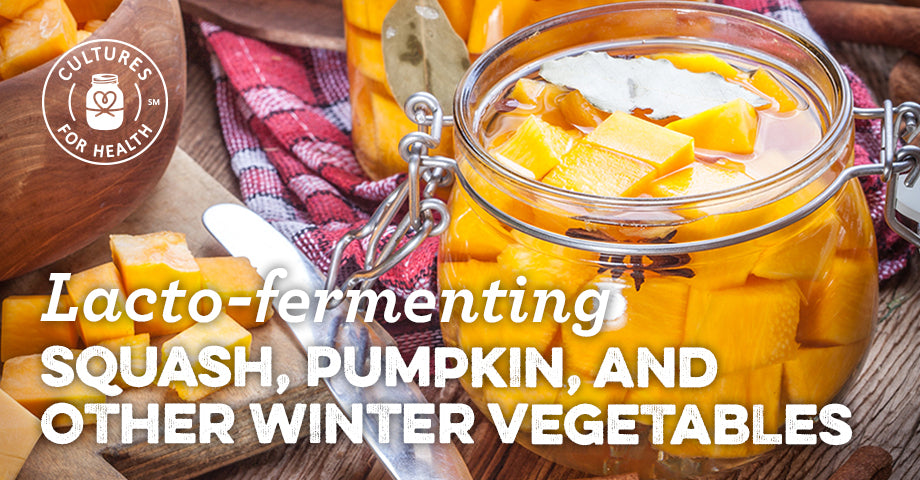
Just because the warm summer months have passed doesn't mean you can't get your fix of vegetable fermenting. Follow these tips and recipes for an abundance of fermented veggies this winter.
PUMPKINS AND SQUASH
Unless you want to add probiotics to all of your vegetables, pumpkin and winter squash will generally keep without fermentation. Their thick rinds allow them to be stored for months in the cooler weather of fall and winter.
Squash does lacto-ferment easily into a firm, sweet, sour, salty treat. Here are some tips for a successful culture:
- Choose a squash with a fairly even rind. You will want to cut off most of it, so varieties such as acorn, turbans and hubbards are difficult to use. Butternut, banana and sugar pumpkins are great choices. Take the time to look over the selection in your market!
- Cut the squash into bite-size pieces, or shred with a grater or food processor. While the culturing process will soften the squash somewhat, it is still quite firm after fermentation.
- Squash is high in sugar, so plan on 5-14 days for fermentation. Longer ferments may begin to develop a slight alcoholic flavor.
- Like all vegetable ferments, keep the squash submerged in the brine using weights.
- We don’t recommend a salt-free ferment for squash
- Any vegetable starter culture will work well with squash, but are not necessary. Because the outer rind contains organisms naturally containing friendly bacteria, you may want to include a hunk of the peeled rind in your fermenting vessel.
Recipes for Lacto-Fermented Squash
ROOT VEGETABLES
Root vegetables are especially tasty when fermented. Because their flesh is quite firm, they retain a satisfying "crunch." Carrots, turnips, parsnips, celery root, daikon, and turnips make delightful snacking foods or side dishes and are readily available in the winter months.
A short ferment highlights the spice of the radish family, while bringing out the sweetness in others. A longer ferment will soften the flesh a bit more, and may make some vegetables more mild. Beets taste more earthy after fermenting raw. Try mixing several vegetables to take advantage of the benefits of each.
Many of the same tips for winter squash also apply to root vegetables:
- Keep the cultures in bite size pieces, or plan to cut them up after fermentation.
- Root vegetables can culture very quickly if shredded. Many recipes slow fermentation by combining them with other vegetables. Cabbage and root vegetable combos are particularly popular.
- If cooking the vegetables before culturing, it is necessary to use a starter culture. Or do as suggested for squash and save a bit of raw, unpeeled root as a starter.
Don’t forget to keep everything submerged. While using an airlock or crock reduces the chances for mold, root vegetables can brown very quickly. Keeping them in the brine at all times gives superior results.
















